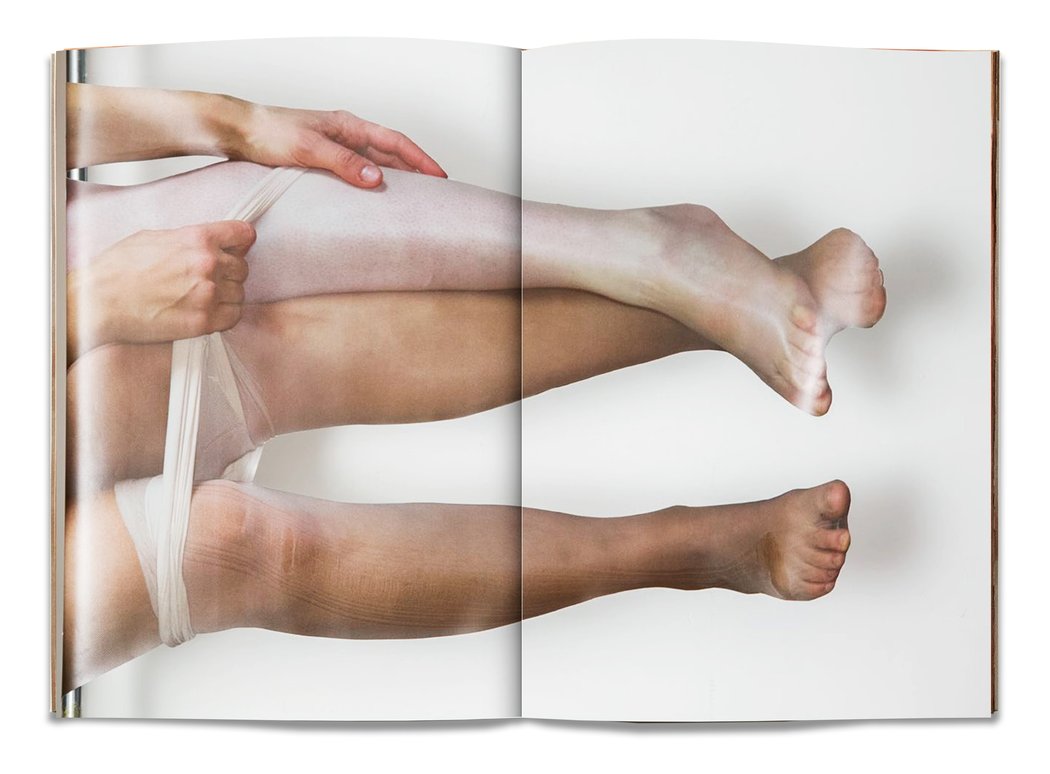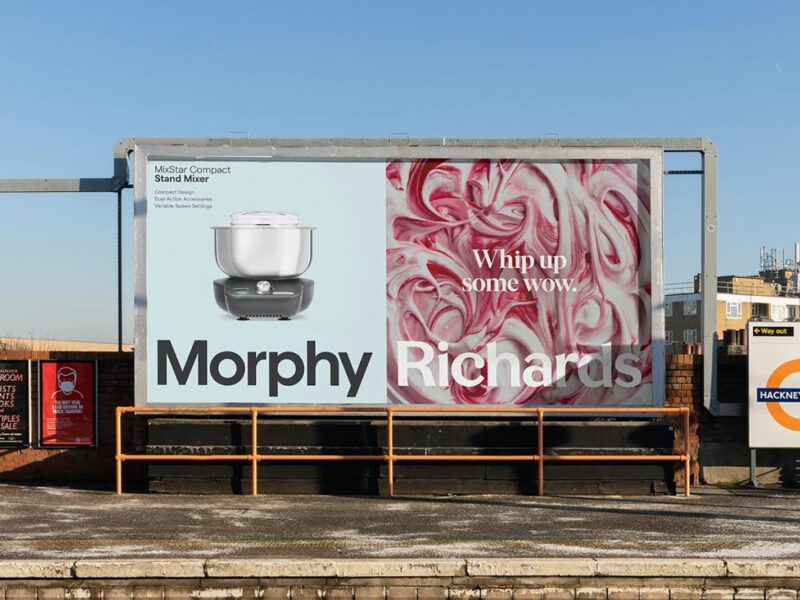
Making photobooks: Advice and insights from Aron Mörel
Aron Mörel publishes photobooks by leading and emerging artists. He has published over 40 titles since founding Morel Books in 2008 – including books of work by Boris Mikhailov, Stephen Shore and Thomas Ruff as well as recent RCA graduate Alix Marie and Romain Mader (the Swiss photographer who received Foam’s prestigious Paul Huf Award for emerging talent in 2017).
Mörel is one of many indie publishers that have sprung up over the past decade. He was inspired to set up the company after spotting a “huge subculture that was kind of blossoming”: specialist photobook stores had just arrived in London and New York (Claire de Rouen in London and Dashwood Books in New York) and social media had given photographers and photography enthusiasts a new platform to share interesting work (Mörel notes photographer Tim Barber’s now defunct website Tiny Vices as a particular source of inspiration).
“I’d always had this fascination with photo books and wanted to go into publishing, so I felt like it was now or never,” he explains.

The photobook scene has continued to grow ever since. Crowdfunding sites have opened up new opportunities for publishers and artists looking to make their work into a book and photobooks have become a popular way for photographers to experiment in light of shrinking commercial budgets (something Self Publish Be Happy founder Bruno Ceschel discussed with CR earlier this week). Photobook fair Offprint has also grown in popularity – over 100 publishers now take part in the event at Tate Modern.
SUPPORTING EMERGING ARTISTS
Increasing competition means publishers have to find their own niche. Mörel Books is perhaps best known for publishing work from an exciting mix of familiar names and fresh new voices – people like Alix Marie, whose work combines sculpture, photography and performance. Mörel says he feels a responsibility to work with emerging names and thinks that bookshops, museums and galleries should do the same. “Platforms like Mörel have to support more emerging artists but that also has to happen with press and also with bookshops,” he explains.

“It’s not very exciting to just walk into a bookshop – and this goes for museum bookshops right down to indie retailers – and see another Cartier-Bresson book, or another William Eggleston review in a broadsheet. It’s not that I have anything against [celebrating] those photographers but it’s not very progressive for audiences having only mainstream things.”
He acknowledges that investing in emerging talent can be a risk – new faces won’t necessarily sell as many books or attract as many visitors as leading names – but he cites Tate Modern as an example of an institution successfully combining the familiar and the new (its current exhibition Shape of Light combines work by the likes of László Moholy-Nagy and Man Ray, with people such as Maya Rochat, Daisuke Yokota and Antony Cairns). “They have a fantastic array of big names but then you’ve also got that mix of younger artists,” he adds.
Mörel’s books cover a diverse range of topics. Recent publications include CITY (a collection of otherworldly silvery prints with a sci-fi feel created by Cairns), I Am Not I (a collection of self portraits made by Boris Mikhailov as the Soviet Union collapsed) and No Joke, a collection of dark and disturbing images cooked up by Roger Ballen and Asger Carlsen.

THE CREATIVE PROCESS
When it comes to working with artists, some publishers prefer a hands-on approach (speaking to CR, Ceschel argued that photographers aren’t the best people to edit their own work and that making a photobook should be a collaborative effort) – but Mörel says he often pushes artists to develop a project themselves. This is in part due to necessity and limited resources but it’s also because he prefers to see artists take ownership of a project.
“[The process] really depends on each project. Each [book] is its own entity to a certain degree and how much influence Mörel has is very much dependent on the artist,” he explains. “The main thing is that I want it to be [the artist’s] book. I’m really more of a facilitator to a certain degree. I’ll sit [with an artist] and we’ll look at prints and put ideas together but I wouldn’t edit the whole book myself. And I don’t think I would work with someone if it meant I’d have to do that. If someone made a submission like that, I might say, ‘I think you should develop a project in these sorts of ways personally, and maybe come back when you’ve done that’. I’ve done that a few times, but I prefer to see an artist develop their idea [independently].”

Selecting projects
Mörel says he is drawn to working with experimental artists – those who approach the medium of photography and the book format in interesting and unusual ways. Cairns’ work combines analogue and digital techniques (his prints were uploaded to an e-reader) and has a retro-futuristic feel, while Alix Marie’s publication Bleu offers an interesting example of how photographers working in sculpture or performance can adapt their work for the book format. Chris Shaw’s book Retrospecting Sandy Hill – a collection of photographs from the Sandy Hill Estate on the border between Surrey and Hampshire – is designed to resemble Shaw’s personal notebooks from the 1980s.
99 percent of photography can be made into a book. You just need to figure out how
“I think playing with the medium is something I think is really interesting. Alix Marie’s work is so sculptural, and she prints on many different mediums, so the way she approached her book was like another one of her projects. Instead of using install shots [of exhibitions], she made a full-on artist’s book and she worked on it for over a year,” he adds.
“To a certain degree I’d be optimistic to say that 99 percent of photography can be made into a book. You just need to figure out or work with the artist to figure out how to make it into an artist’s book. I’m sure there’s photography that’s harder to implement in a book format – but I don’t think I’ve come to that place where I’ve felt there’s a barrier. And if there ever has been a barrier it’s been mostly financial, for example, we can’t put gold foil in every page. There are so many different ways to do a book – if you had just one massive single image and folded it up like a map and put texts on it I would think that could constitute a very interesting [publication],” he adds.

FUNDING BOOKS
Mörel doesn’t use crowdfunding (“it’s too much work,” he says). Instead, he funds each book the company makes and artists receive a percentage of the profit after production costs and retailers’ discounts have been taken into account. (Artists are not asked to contribute any money up front.)
“The margins for book publishers are really minimal. Almost all publishers have second jobs. They’re publishing companies’ own patrons and they’ll be doing design [or editing] work on the side and putting that money into doing a book,” says Mörel. This brings with it a great deal of pressure – “if those margins are missed it’s a really high risk situation and that’s why you have to [get books in to stores] as much as you can but on the positive side, you also have the internet and book fairs [which allow publishers to sell books directly to readers].”
“We’re also looking at alternative ways to fund photobooks, whether it’s making special editions and trying to sell them to institutions or trying to sell books at a modest price,” adds Mörel. Antony Cairns’ book is priced at £35 – which is almost at cost for us – but we’re also doing some [more expensive] special editions. I think right now, publishers have to look at those different methods to cover part of the cost of production because there’s a lot of gambling in publishing and you never know how successful a book will be,” he adds.
It’s like music. If you’re making dust metal, don’t try and sell your dust metal band to a candy pop label
Publishing is a tough business, but Mörel is confident that photobooks still offer a great opportunity for photographers and artists to showcase their work and develop their practice. “When I was younger, maybe in the early 2000s, a lot of photographers were thinking of doing exhibitions. There were a lot of smaller galleries in London, so you had that option. Now, I think a lot of photographers look at a book as a relevant and informative way of looking at their own artwork,” he says. “There’s a huge attendance at photobook fairs and there are a lot of indie bookstores and fashion retailers [that stock books]. But then on the other side, there is a mass saturation of publishers: Offprint started with 30 [now there are over 100].”

ADVICE FOR PHOTOGRAPHERS
For photographers who would like to get their work published, Mörel recommends doing your research and working out which of the many publishers around is the best fit for your work. It sounds like common sense but as Mörel points out, it can mean the difference between landing a book deal and wasting time chasing dead ends.
“I’d say the first and main thing is get the project into a good space where people can understand what you’re doing. And most importantly, research which publishers you’re applying to – you’ll be wasting everybody’s time if you’re sending it to the wrong people,” he says.
“It’s like music: if you’re making dust metal, don’t try and sell your dust metal band to a candy pop label because they’re going to be like ‘I don’t get it’, so try and find the publisher that you think the content of your work fits with confidently. To a certain degree that’s just doing your research, but there’s a whole plethora of publishers out there. Some might be doing documentary work, some might be doing more digitally manipulated work, so it’s about finding something that will match your content and doing that research is essential.”

The post Making photobooks: Advice and insights from Aron Mörel appeared first on Creative Review.
Read more at creativereview.co.uk






